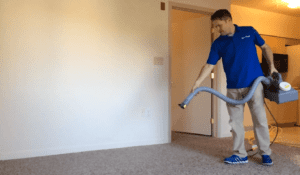Accidents happen. Maybe your child had a rough night or your pet sneaked onto the bed. Whatever the cause, finding pee on your mattress is never fun. Urine seeps in quickly, causing the odor to linger. Because of this, it’s easy to wonder if the mattress is a lost cause. The good news is that it isn’t.
Learning how to get pee out of a mattress quickly can save you from spending too much money on a new mattress. With the right approach and simple household materials, you can address the problem before it causes odors or damage.
Why You Need to Act Quickly
The sooner you take action, the better your chances are of saving your mattress from lasting stains and odors. Urine isn’t just liquid; it carries salts, proteins, and bacteria that can seep into the fabric and padding if left untreated. Acting quickly can make the difference between a quick cleanup and a lingering issue.
Prevent Odor
Urine has a strong smell that only worsens as it dries. Once it penetrates the mattress fibers, the odor can be difficult to remove completely. Immediate cleanup keeps smells from setting in.
Prevent Stains
Urine can leave behind yellow or brown discoloration if it soaks into the surface. Even after the area dries, stains may remain visible without proper treatment.
Prevent Bacteria & Mold
A damp mattress creates the perfect environment for bacteria and mold to grow. Both can lead to unpleasant odors and potential health concerns if left unaddressed.
Health Concerns
Exposure to bacteria, allergens, and mold spores can cause irritation, breathing issues, or skin problems. Keeping your mattress clean protects your health as well as your comfort.
Prevent Permanent Damage
Mattresses are an investment, and urine can weaken the fabric or padding if not addressed quickly. Cleaning it right away helps extend the lifespan of your bed.
Materials Needed to Clean Urine from a Mattress
Before you begin, gather the necessary supplies. Most of these items are already in your home, and they’re safe to use on mattresses when applied properly.
- Baking Soda: Absorbs moisture and neutralizes odors.
- Vinegar: A natural deodorizer that helps break down urine stains.
- Hydrogen Peroxide: Useful for disinfecting and treating stubborn stains.
- Dish Soap (optional): Breaks down oils and proteins in urine.
- Enzyme Cleaner: Recommended for dried or tough stains, especially from pets.
- Towels or Paper Towels: Blot as much urine as possible before it soaks in.
- Spray Bottle: Makes applying cleaning solutions easier and more even.
Natural options, such as vinegar and baking soda, are gentle and safe, but may take longer to show results. Stronger choices, such as enzyme cleaners or hydrogen peroxide, can be more effective; however, it’s always a good idea to test them on a small, hidden spot first.
Step-by-Step Guide to Remove Pee from Your Mattress
Cleaning a mattress isn’t as hard as it seems, but timing matters. Follow these steps to get the best results.
Step 1: Blot the Area Immediately
Start by removing as much liquid as possible. Use clean towels or paper towels to blot the spot. Be sure not to scrub, since that can push the liquid deeper into the mattress. Press firmly to soak up the moisture, then replace the towel as it becomes damp. The more liquid you remove upfront, the easier the rest of the process will be.
Step 2: Apply Vinegar Solution
Mix one part white vinegar with one part water in a spray bottle. Lightly spray the affected area, making sure not to oversaturate the mattress. Allow the solution to sit for 10–15 minutes. The vinegar will help neutralize odor and begin breaking down the urine. Then, blot the area again with fresh towels to remove excess liquid.
Step 3: Sprinkle Baking Soda
Generously cover the damp spot with baking soda. This step draws out remaining moisture and absorbs lingering odors. Leave the baking soda on for at least eight hours, or overnight. For best results, ensure the room has good airflow during this stage.
Step 4: Vacuum the Baking Soda
Once the baking soda has fully dried, use a vacuum cleaner with an upholstery attachment to remove it. Go over the area slowly and thoroughly to ensure that all baking soda is removed. Once you’ve vacuumed thoroughly, the surface should feel fresh and look much closer to its original state.
Step 5: Use Hydrogen Peroxide for Stubborn Stains
If a stain remains, mix one cup of hydrogen peroxide with three tablespoons of baking soda and a few drops of dish soap. Apply the solution lightly with a spray bottle and let it sit for about 10 minutes. Blot gently with a clean cloth. Keep in mind that hydrogen peroxide can lighten some fabrics, so test a small area before applying it to the stain.
Step 6: Let the Mattress Dry Completely
Airflow is key to finishing the job. Open windows, set up a fan, or place the mattress in a sunny spot. Allow the mixture to dry for several hours. Sleeping on a damp mattress can cause mold growth and revive unpleasant odors, so patience in this regard makes a significant difference.
How to Avoid Urine Damage in the Future
Accidents are hard to prevent entirely, but you can make cleanup easier and protect your mattress with a few simple habits.
- Waterproof Mattress Protector: These covers create a barrier that keeps liquids from seeping into the mattress. They are especially helpful for kids’ beds and homes with pets.
- Quick Action: Responding right away makes all the difference. A few quick minutes with towels and a spray can save hours of scrubbing later.
- Regular Maintenance: Vacuum your mattress every few months and sprinkle baking soda occasionally to freshen it up. Preventative care reduces the chance of lingering odors or hidden moisture.
What to Do If the Smell Doesn’t Go Away
Even after cleaning, some mattresses hold onto odors. If you still notice an unpleasant smell, try one of these options.
- Repeat the Process: Sometimes one round isn’t enough, especially if the stain has had time to soak in. Revisit the vinegar and baking soda steps to remove any remaining moisture and odor. Many people find the smell fades significantly after this extra effort.
- Use an Enzyme Cleaner: These products break down the proteins in urine that cause smells. They’re especially effective for pet accidents and older stains. For stubborn pet accidents that just won’t fade, calling in a pet odor and stain elimination service is often the easiest way to restore freshness.
- Professional Mattress Cleaning: If DIY methods aren’t enough, consider scheduling a professional mattress cleaning service. Professionals utilize equipment that penetrates deeply into the mattress layers, effectively removing odors and stains more thoroughly than home methods.
Fresh Starts Are Possible
A mattress accident doesn’t mean your bed is ruined. By learning how to get pee smell out of a mattress quickly and using the right cleaning methods, you can remove stains, neutralize odors, and protect your investment. From blotting and vinegar solutions to baking soda and enzyme cleaners, each step helps restore freshness and comfort.
If odors persist or you’d rather leave the work to experts, you can always schedule a professional service and enjoy peace of mind knowing your mattress is in good hands.
Mattress Cleaning FAQs
Yes. Everyday items like vinegar and baking soda are surprisingly effective, and they’re safe for most mattresses. For stubborn stains or pet accidents, an enzyme cleaner is often the best choice.
Cleaning itself doesn’t take long, but drying does. Expect to wait for several hours for the baking soda to work and for the mattress to air out. In most cases, it’s best to let it dry overnight before making the bed again.
It can. Hydrogen peroxide sometimes lightens fabric, which is why it’s smart to test it on a hidden spot first. If nothing changes, proceed with using it on the stain.
Unfortunately, mattresses and washing machines don’t mix. They’re too heavy and dense. Stick with spot cleaning or bring in professionals if it requires a deep clean.
If the odor lingers, don’t panic. Try a second round of cleaning or switch to an enzyme-based product. When nothing else works, professional cleaning usually does the trick.




